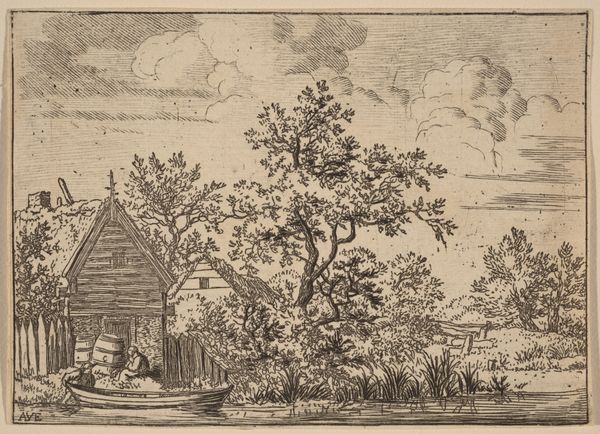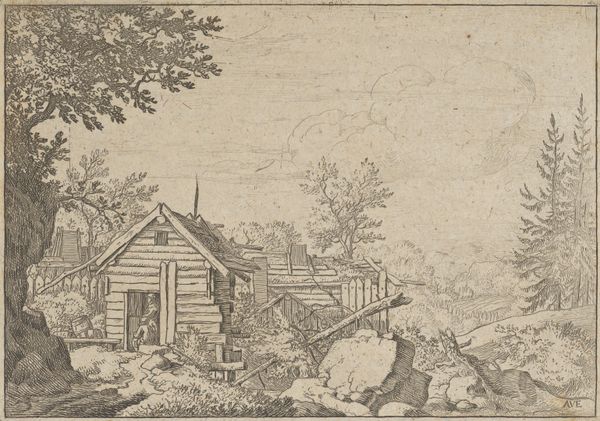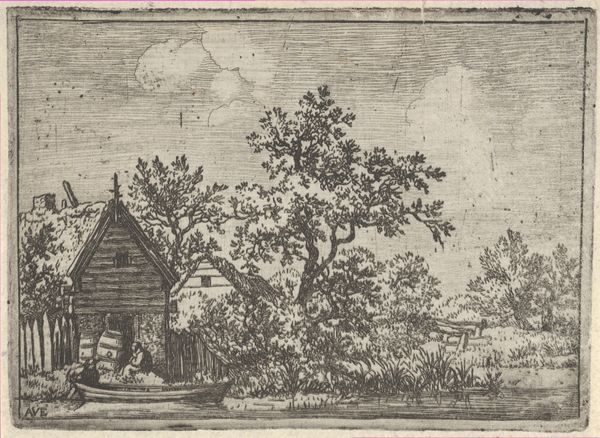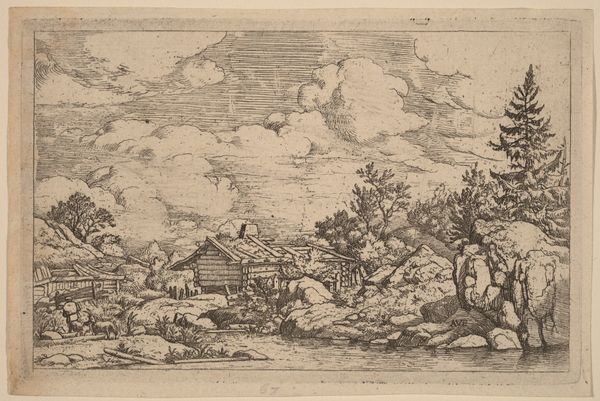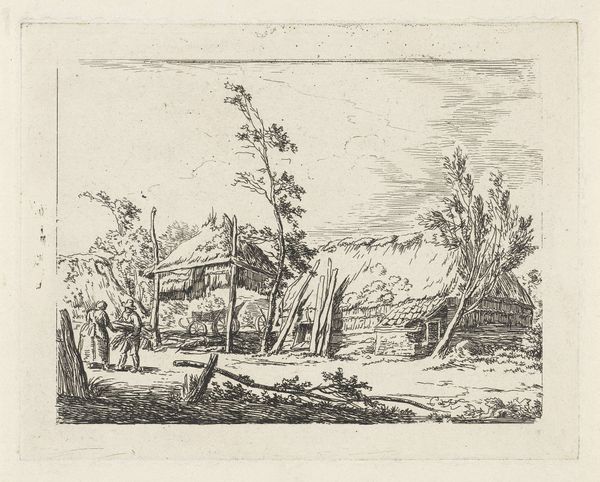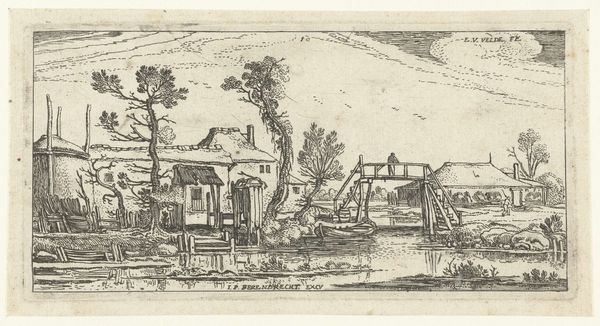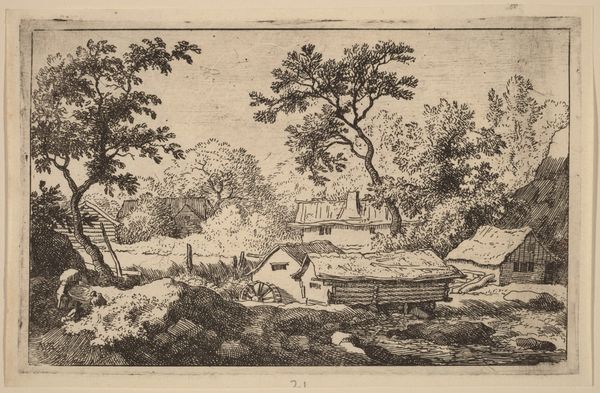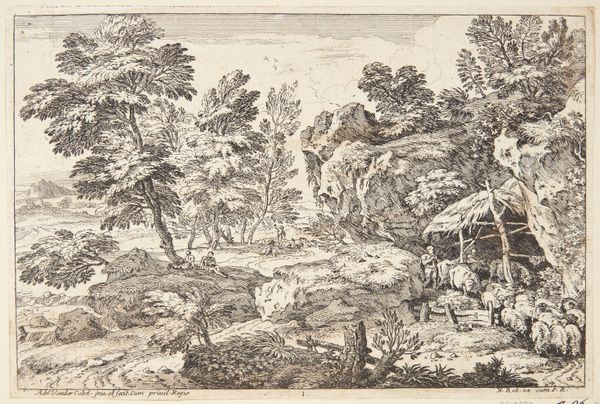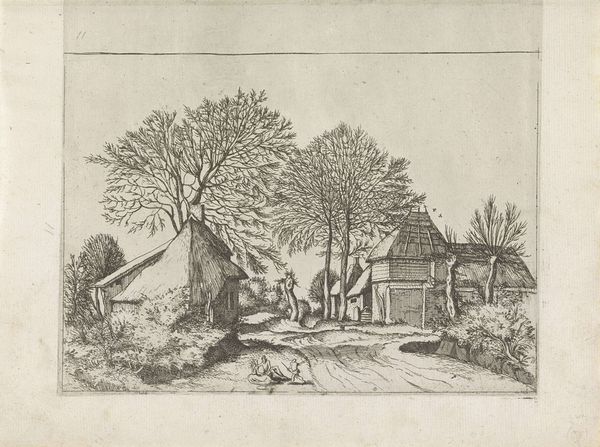
drawing, print, woodcut
#
drawing
#
dutch-golden-age
# print
#
dog
#
landscape
#
house
#
woodcut
#
men
Dimensions: 8 1/8 in. (20.6 cm) 3 3/8 x 4 3/8 in. (8.6 x 11.1 cm)
Copyright: Public Domain
Editor: Here we have "The Pilgrim with the Dog" by Allart van Everdingen, probably made somewhere between 1621 and 1675. It's a small woodcut print, depicting, as the title suggests, a traveler and his dog making their way through a landscape. There’s a real sense of weariness, and the etching itself has a slightly worn, weathered feeling. What stands out to you? Curator: The apparent simplicity of the scene belies a deeper commentary. Van Everdingen was working during a period of intense social and religious upheaval. Consider the figure of the "pilgrim" – a loaded term. What kind of journey is this man undertaking? Is it literal, a simple journey, or does it reflect the period's intense religious soul-searching and the Reformation's challenge to established authority? Notice also the condition of the buildings in the background and think about how a stable or destabilized society affects them. Editor: That's fascinating! I hadn't considered the religious context. The state of the buildings certainly hints at some social or political context that affected everyday life. So, would the dog then symbolize something too, like loyalty during these times? Curator: Precisely! Animals in art are rarely just animals. Consider the traditional symbolism of dogs representing fidelity and guidance. Who is guiding whom in this image? Is it the pilgrim who is mastering nature or is nature influencing and shaping his understanding of self? Remember that landscape wasn't just scenery for the Dutch Golden Age painters, but a space of social, political, and philosophical meaning. It held stories. How do social and political realities in Van Everdingen's time speak to modern issues of displacement and searching for belonging? Editor: This completely shifts how I see the work. I thought it was just a simple landscape, but now I see a visual representation of someone going through real historical circumstances! Curator: Exactly. It encourages us to think about individual experience within much larger political and religious upheavals, then and now. It's not enough to look only *at* it: We should examine art and find meaning *within* it.
Comments
No comments
Be the first to comment and join the conversation on the ultimate creative platform.

